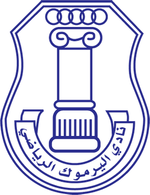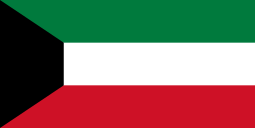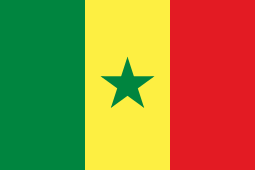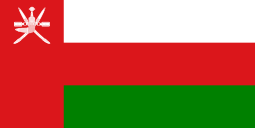Al-Yarmouk SC (Kuwait)
Al-Yarmouk is a Kuwaiti professional sports club located in the district of Mishref. It was established on 28 February 1965 in Failaka Island and was the only Kuwaiti club to have been established outside mainland Kuwait at that time. The club was relocated to mainland Kuwait after the 1990–1991 Gulf War, which resulted in the displacement of many inhabitants belonging to Failaka's island settlements. Therefore, due to inadequate facilities after the liberation of Kuwait, it was inevitable that the team had to move to a better and more sustainable location. Other reasons, aside the Gulf War, for the relocation of the club was due to the insufficient means of transportation for teams and players to travel to Failaka Island for away matches during the regular season.
 | |||
| Full name | Al-Yarmouk Sporting Club | ||
|---|---|---|---|
| Nickname(s) | Al Yaramka ( اليرامكة ) | ||
| Founded | 1965 | ||
| Ground | Mishref Stadium Mishref, Kuwait | ||
| Capacity | 12,000 | ||
| Chairman | Fahad Ghanim | ||
| Manager | Hani Al Saqer | ||
| League | Kuwaiti Premier League | ||
| 2013–14 | 10th | ||
|
| |||
Al Yarmouk is mostly famous for its football team, which gave rise to a plethora of talented Kuwaiti football players during the course of its history. The club has only achieved 4 trophies since it was first established, 2 of which were the Prince Cups in 1970 and 1973, which is usually regarded as the most prestigious and important trophy in Kuwaiti football. The other 2 trophy achievements were the Second division titles won in 1968 and 1989.
Al Yarmouk sports club went through a major renovation project since 2006, as part of a grand scheme to regenerate interest within the local Mishref community. A new stadium was built and is also planned for a second phase of renovation. Al Yarmouk also built new swimming facilities as well as an indoor arena for basketball, handball, volleyball and other indoor sports such as table tennis. A track and field team is also widely financed from the club's department. There is also an extra outdoor football field for training and for youth matches.
The Mishref stadium is planned to be an all-seater, and there are also plans to make seating expansions and a roof around all the stands.
The club's main two colors are navy blue and white, representing the sea, which was a major part of Failaka Island's culture. The logo represents the ancient Greek ruins located in Failaka Island, also known as 'Ikaros' during the times of Alexander the Great. Al Yarmouk club have since used this logo and color as a representation of their potential strength to success.
The club isn't as popular as Kuwait's big five elite (Kuwait SC, Al-Arabi SC, Qadsia SC, Kazma SC and Salmiya SC), however, it is usually supported primarily by people in the surrounding area of the club's location. Prior to the Gulf War, it was supported by the local inhabitants of Failaka Island. After its relocation, however, it shifted away from Failaka's fanbase and is now attracting fans mostly from the Mishref residential area, although it also attracts supporters from other nearby areas such as Salwa and Bayan.
People expect Al Yarmouk to have a bright and successful future with its ambitious new board.
Achievements
- Kuwait Emir Cup: 2
- 1970, 1973
- Kuwaiti Division One: 3
- 1967/68, 1988/89, 2018–19
- Kuwait Federation Cup: 1
- 2002/03
- Kuwait Joint League: 2
- 1972/73, 1973/74
Futsal
- Kuwaiti futsal league: 2
- 2009–10, 2010–11
- Kuwaiti Futsal Federation Cup:0
- Kuwaiti Futsal Super Cup:3
- 2010, 2011, 2014
Club history
The idea of initiating a club based in the island of Failaka began in 1963 when a group of local footballers wanted to officially join the Kuwaiti football association and start participating in its respective competitions. The club was to represent the local inhabitants of Failaka. The club was officially declared on 28 February 1965 and was formally conceived by the Kuwaiti football association board on 7 March 1965.
The name of the club roots back to the legendary Islamic battle of 'Al Yarmouk', which took place near the Yarmouk River, now the border between Jordan and Syria, between Arab-Muslims and Byzantine-Christians. The reason why this name was chosen is that Al Yarmouk holds various Greek ruins, which reminded the local people of the Byzantine Empire and how strongly it influenced Northern Arabia before Islamic times, making them appreciate the battle of Yarmouk, thus deciding on naming it after the battle which resulted in the triumph of Muslims over Christians. The club badge/emblem represents a reminder of Failaka's history as Ikarus, the name given to it by the ancient Macedonians during Alexander the Great's reign over this region, and his establishments in the island which is reflected today by the appearance of many old Greek ruins.
Current squad
Note: Flags indicate national team as defined under FIFA eligibility rules. Players may hold more than one non-FIFA nationality.
|
|
This season's transfers
In


























Out







